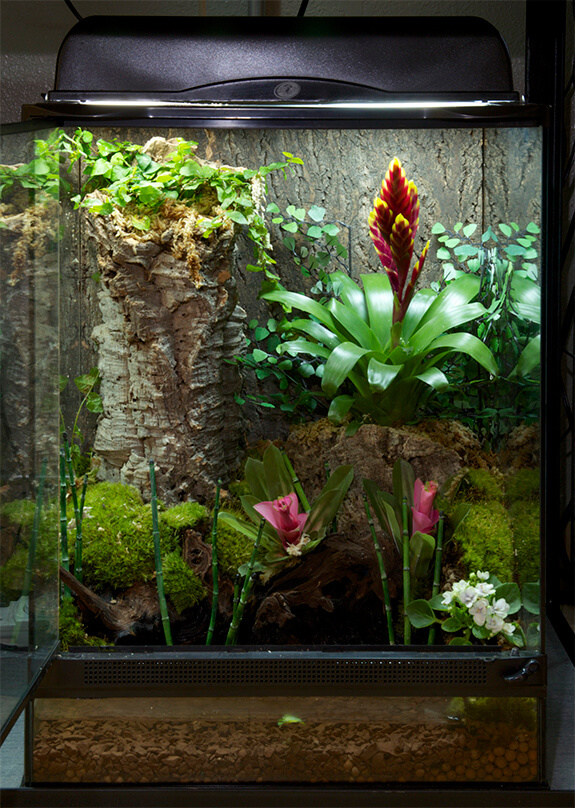Do you think its possible to keep air plants alive in grout inside an outworld? What would be any possible problems?
Edited by Mannomorth, November 26 2015 - 9:18 AM.

Do you think its possible to keep air plants alive in grout inside an outworld? What would be any possible problems?
Edited by Mannomorth, November 26 2015 - 9:18 AM.
I'm not sure that embedding them in the grout is your best option. I have air plants that I've been experimenting with inside of my outworlds with success. Just make sure you give them some moisture once a week and they seem to do fine.
Edited by Miles, November 26 2015 - 9:47 AM.
PhD Student & NSF Graduate Research Fellow | University of Florida Dept. of Entomology & Nematology - Lucky Ant Lab
Founder & Director of The Ant Network. Ant keeper since 2009. Insect ecologist and science communicator. He/Him.
I want to make an outworl with any loose dirt or anything that the ants can move (cuz of mold).
How did you do it? And what do you think is a better idea? perhaps wrap the roots in sythetic textile?
Well if i try to find a nonshredding or at least rarley shredding plant than it should be ok, just adding an airtight cover should do the trick at least for the moisture part.
Now the sun part is a bit more tricky I must say, but if I dedicate the outworld for Messor that at least want a bit warmer than the other northern ants we get up here that should make it ok to shine a uv lamp on the outworld? Now if the lid is closed to keep the moisture in then its going to be like a sauna in there real quick with a light beaming... Sod it, i might just do plastic
I use hydrostone to make my outworlds, but grout will do fine. All you need to do is create a small area that's shallower than the rest and place the air plant there. You can cover the roots with the same quartz sand you use to create the outworld surface, which is a beneficial tool for your ants to use in nest customization and the covering of molding objects.
No outworld should be completely sealed. Vents are recommended for airflow and to keep humidity low in the outworld. High humidity frequently equals molding of foods and waste much more quickly.
I keep my air plants in well vented outworlds. The key is that they have some source of moisture once a week. I've never had to give them any kind of soil or nutrient provision. I'm not particularly familiar with air plant care, but from what I can tell, mine are doing great.
Edited by Miles, November 26 2015 - 12:25 PM.
PhD Student & NSF Graduate Research Fellow | University of Florida Dept. of Entomology & Nematology - Lucky Ant Lab
Founder & Director of The Ant Network. Ant keeper since 2009. Insect ecologist and science communicator. He/Him.
Thanks for all the valuable information, now some of the puzzles are in place.
A few considerations about live plants:
The Tillandsias you speak of are native to moist regions with frequent rain. A plaster or non-absorbent foraging area is more of a lukewarm desert—not really fitting into any known biome classification due to the lack of water and relatively low year-round temperature and lighting, when maintained indoors.
Maintaining tillandsias in such an indoor foraging area would require an open setup with intense lighting and misting several times a day. They're not the ideal candidate for more sterile foraging areas.

Many European antkeepers maintain natural, planted terrariums in which the ants may inhabit without any separation between nest and foraging area. Since the ants in such setups are not confined to a designated nest, and the colony is generally hidden from view, the setup can include some soil and other traditional elements beneficial to plants. I imagine an ideal planted setup might look similar to this:

In the course of keeping a planted foraging area for about 9 months, I learned a few things:
Edited by drtrmiller, December 2 2015 - 3:26 PM.
Thanks Miller for that thorough explanation. You really gave me some flesh on the bones. Yes it is that video of yours that sparked my interest ![]()
It must be quite a pain to keep such an outworld free of bugs, mites and pests, but I would love to try one day.
No. It's a small ecosystem containing all those things you mentioned.
Mites and "pests" only become a problem when an ecosystem is out of balance, such as in the confines of a more barren formicarium where the more opportunistic "pests" start to harm the ants.
0 members, 0 guests, 0 anonymous users